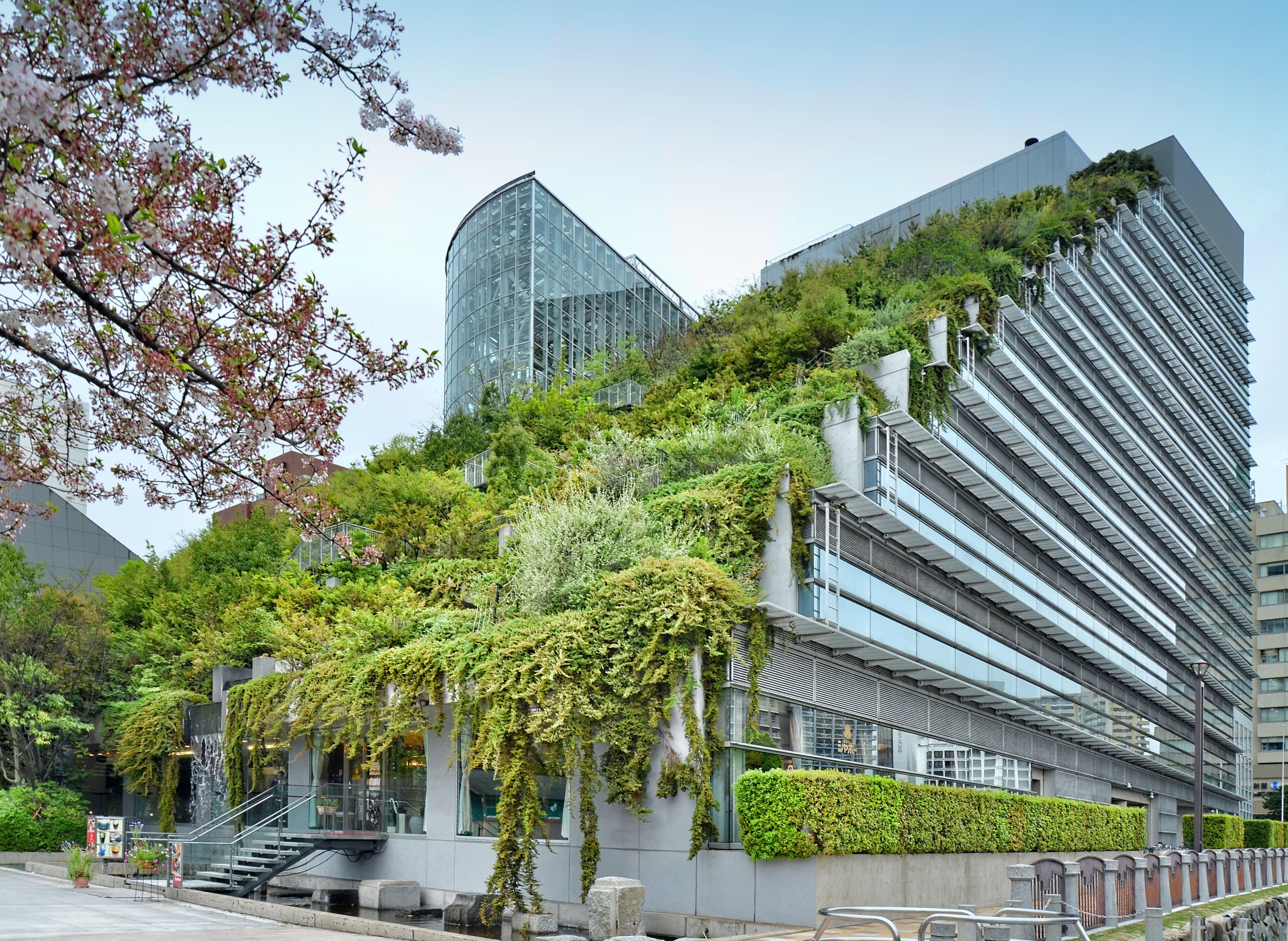
Vertical Garden: Trends, Tips & Benefits
02/15/2024 - Pia from greeny+
In the midst of the hustle and bustle of the city, where every square meter is precious and space is in short supply, an innovative answer to these challenges is emerging: vertical gardens. Flower beds are transformed into green walls of plants , and indoor gardens take on a new dimension.
In the following article, let's dive into the fascinating world of vertical gardens, where nature and urban life merge in harmonious harmony.
-
The essentials in brief:
- The vertical garden describes a garden design in which plants are arranged on vertical levels.
- A space-saving, aesthetically pleasing dismantling method with a wide range of garden design options.
- Suitable for anyone who has limited space or is looking for a creative, space-saving garden solution.

What is a vertical garden?
The emerging garden style is an innovative growing method that involves planting plants on vertical surfaces, such as walls or trellises . This orientation maximizes space, allows for upward growth and develops a vibrant variety of plants, flowers, herbs or vegetables along these surfaces.
Whether on terraces, balconies, indoors or even on your own house wall, these green wall gardens not only offer a clever solution, but also literally create an escape from the concrete jungle . Flower beds are transformed into vertical plant walls and the traditional indoor garden finds a new dimension in the wall garden concept - this is how the vertical garden revolutionizes "urban gardening" in big cities.
The creative design palette ranges from lush greenery to colorful planting, with the vertical garden also being known as wall garden, vertical plant wall, green wall or living wall .
Five benefits of vertical gardens
This aesthetically pleasing garden solution is not only a space-saving feast for the eyes, but also offers a variety of additional benefits:
Collapsible content
Reduction of CO₂ emissions
The green oases act like natural filters by filtering pollutants and releasing fresh oxygen.
Thermal insulation
In urban environments, vertical gardens can help reduce urban heat islands by absorbing sunlight and cooling the environment.
Humidity regulation
Plants release water through the process of transpiration, which helps increase humidity . This can be particularly beneficial in dry or air-conditioned environments to regulate humidity in urban environments.
Soundproofing
Plants have sound-absorbing properties . A vertical garden can help reduce noise levels in urban areas, contributing to a quieter environment.
Control over growing conditions
By using irrigation systems and specialized substrates, gardeners have more control over the conditions in which their plants grow. This enables optimal care and promotes healthy plant growth .

The transformative power of a vertical garden transforms a monotonous workplace into a vibrant green oasis .
Who is a vertical garden suitable for?
A vertical garden is suitable for a variety of people and situations because it is a versatile option that can be adapted to different lifestyles and needs .
Here are four groups that a vertical garden might be particularly suitable for:
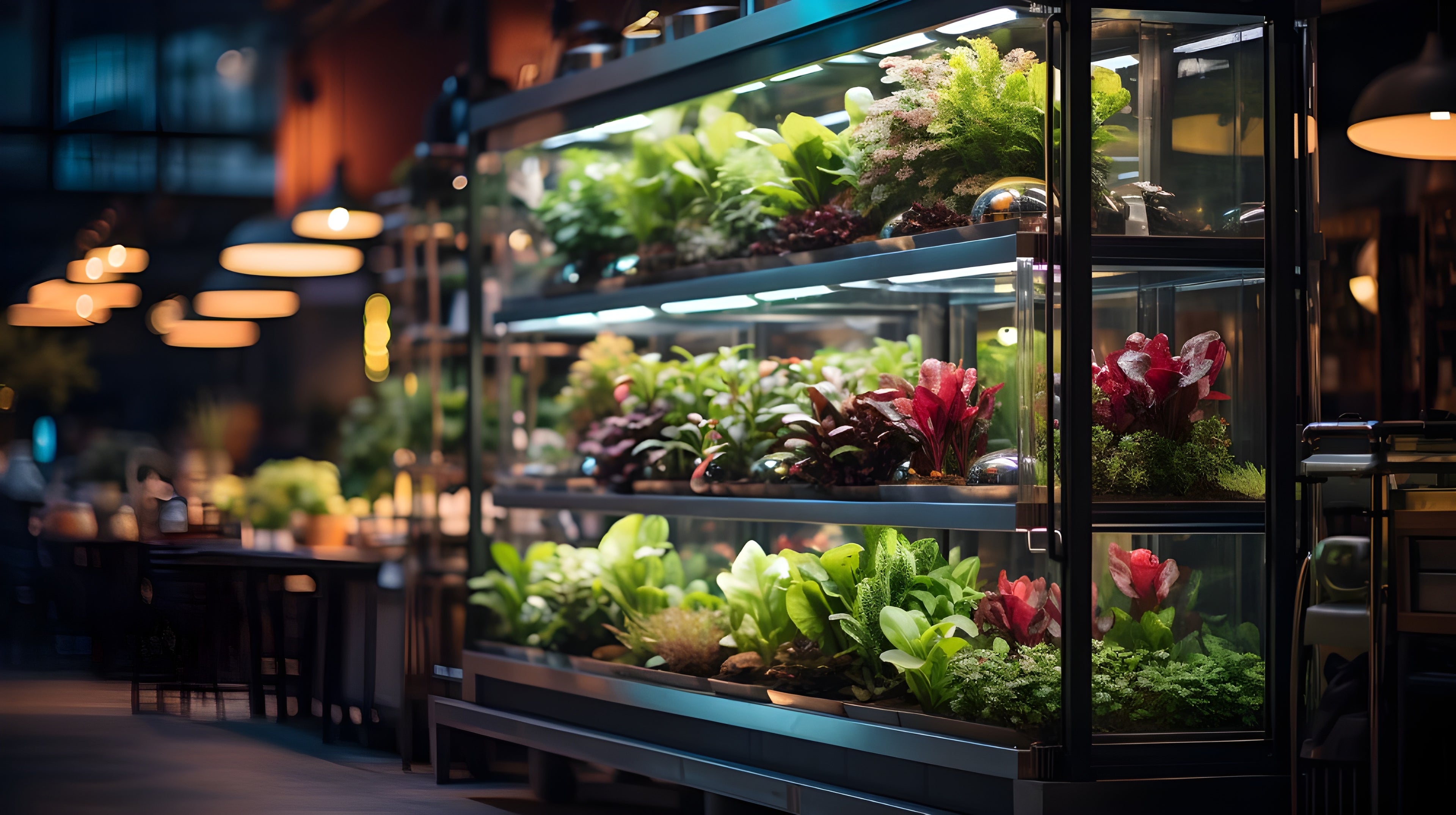
-
1. Renters with Limited Space: Renters who have limited outdoor space can pursue their love of growing plants without taking up a lot of floor space.
2. Garden lovers with limited time: For those with limited time for garden maintenance, a vertical garden offers a compact solution that requires less maintenance than a traditional garden.
3. Older people or people with limited mobility: Raised planters, for example, make care easier and easily accessible for people with limited mobility or older people.
4. Restaurateurs and Chefs: Restaurants and home cooks can benefit from vertical herb gardens because they can grow fresh herbs right on site, which is not only convenient but also flavorful.
Tips for choosing the location
Planning and selecting the location for a vertical garden are crucial steps in ensuring your plants thrive. Here are some important considerations:
Collapsible content
1. Lighting conditions
Some plants require a lot of sunlight, while others need partial or complete shade. Make sure the location you choose receives enough direct or indirect sunlight . If you are placing your garden indoors, it may also be necessary to use a special grow light to ensure the right lighting conditions.
2. Wind conditions
Pay attention to wind conditions, especially if the vertical garden is placed outdoors. Strong winds or storms can be very difficult for plants, so a sheltered position is often beneficial.
3. Climatic conditions
Take into account the climatic conditions of your region. Not all plants are suitable for every climate . Choose plants that can withstand the temperatures and climatic conditions of the location.
4. Space requirements/accessibility to care
Vertical gardening is a great way to save space, but that doesn't mean you don't need space. Whether you're planting your garden on a balcony, your patio, your backyard, or even your living room, you need to make sure the area you choose has enough space for your plants. Also consider the accessibility of the location for care. An easily accessible location makes watering, fertilizing and other care easier.
5. Space availability of the plant
Check whether the structure of your plant containers is safe and stable and provides enough space for root growth and the blossoming of plants.
6. Soil quality
The soil is the foundation on which your garden grows. It must be enriched with nutrients and, if necessary, contain enough drainage to ensure that the roots of the plants do not stand in water. Even though vertical gardens require less soil than traditional gardens, soil quality cannot be neglected .
7. Purpose
Consider what purpose you want your vertical garden to serve. Should it just be decorative, provide fresh herbs for the kitchen or even provide you with vegetables? The intended use influences the selection of plants and the structure of the garden.
Tip: Careful planning and location selection lay the foundation for your successful and attractive garden design.
Diversity in vertical garden design
Your decision to use a particular method should depend on personal preferences and local conditions .
There are many ready-made vertical garden options that promise ease of use and convenience . These can be a good option, especially if you are looking for a hassle-free solution. For those who like to be creative themselves, there are also DIY alternatives .
However, when making your selection, keep in mind that the key to successful design is ensuring that irrigation is appropriate and the location meets the needs of the selected plant species.
An excellent example of this are planting towers like the greenyGARDEN HOME from greeny+ . This technical masterpiece takes care of the well-being of your plants almost independently, conjures up an artistic jungle in your home and is a delight to the eye.

A practical option is to transform a simple wooden pallet . The subjects
This palette not only provides an excellent platform for plants, but also lends
also a unique charm.
Care and watering
-
irrigation
You can of course do this manually, for example with a watering can, but be careful not to water too much, as the water cannot always drain properly in vertical gardens. Excessive moisture can lead to waterlogging , which in turn can cause root rot and, in the worst case scenario, the death of your plants.
It is also possible to install an automatic irrigation system. Such a system proves to be particularly practical if your vertical garden is large.
Possibilities for this would be, for example: E.g.:
Vertical Irrigation Systems: Special vertical irrigation systems are designed to direct water from top to bottom throughout the vertical garden. These systems can be automated and timed to facilitate irrigation.Sprinkler or Spray Systems: These systems can be placed on the sides or top of the vertical garden to spray water over the plants. This is particularly effective for plants that require consistent watering.
-
fertilization
To ensure that your plants bloom magnificently or reward you with a rich harvest, you should apply fertilizer regularly . This is particularly important for vertical gardens, as nutrient reserves are quickly used up due to the small soil volume.
Special liquid fertilizers , which are administered using irrigation water, are particularly recommended for fertilization. These can also be easily integrated into irrigation systems to ensure a continuous supply of nutrients.
Regardless of your chosen fertilizing method, it is crucial to carefully dose the amount of fertilizer according to the instructions to avoid over-fertilizing.
-
Pest control
Even when maintaining vertical gardens, pest infestations can occasionally occur. Pest control is similar to traditional gardens. It is important to check the plants regularly for signs of pest infestation . If pests occur, there are various methods to combat them. These range from natural home remedies to biological pesticides and chemical pesticides.
Which method you choose depends on the type of pest, the severity of the infestation and your personal preferences.
Which plants are suitable for a vertical garden?
There are a few things to consider when choosing the right plants, as not all plants are equally suitable for a vertical garden. The choice of plants depends on factors such as location (indoor or outdoor) , lighting conditions, climate and personal preferences .
So before you choose plants, think carefully about whether they are suitable for the specific conditions of your vertical garden and think about how you can combine them harmoniously.
Here are some plants that are particularly suitable for vertical gardens:
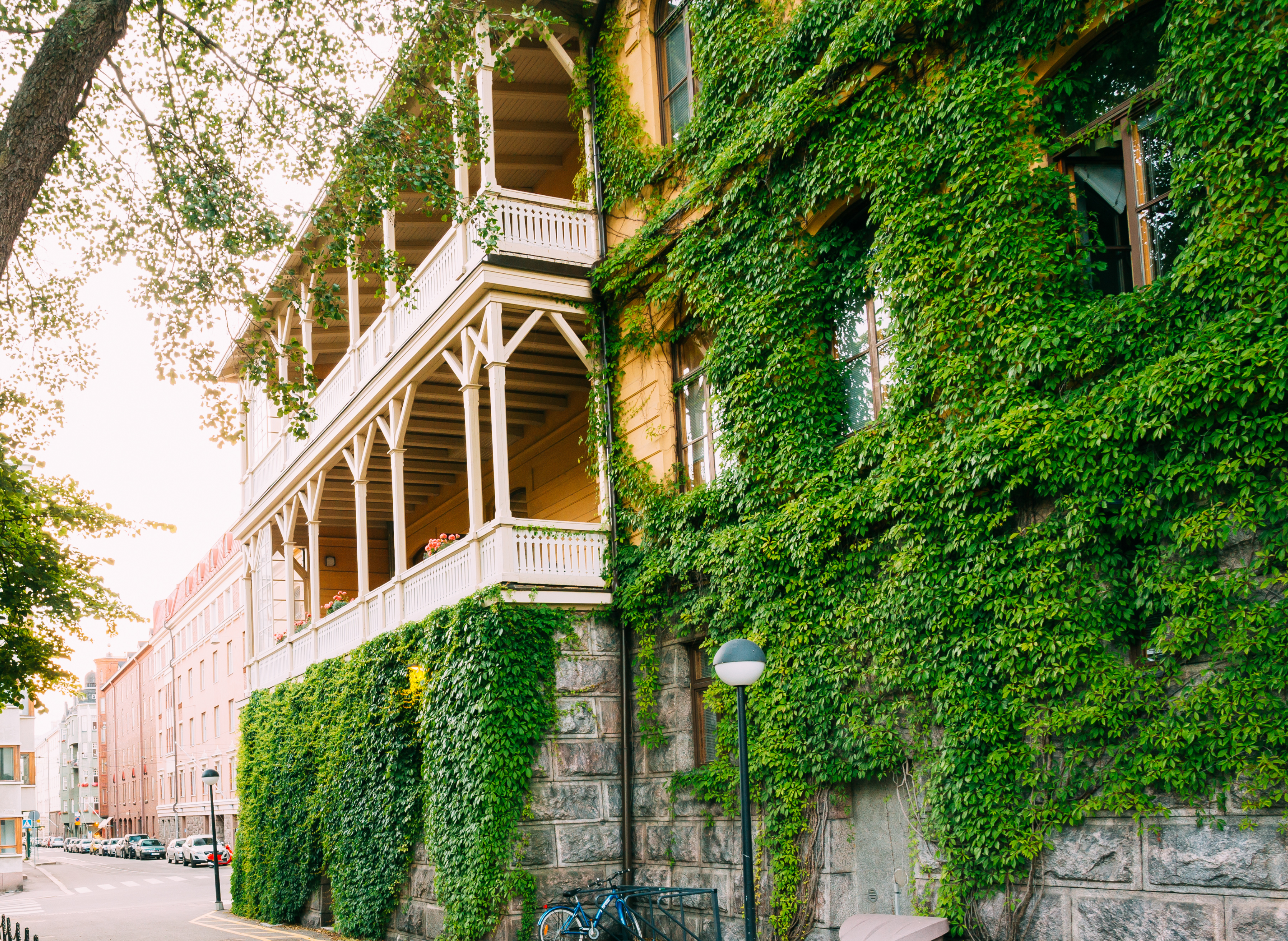
climbing plants
Climbing plants are excellent and are a natural choice. They can quickly form a green privacy screen or simply look beautiful climbing up a wall. An example of a suitable climbing plant is the ivy. To support growth, a net or trellis can be mounted on the wall to support the plants.
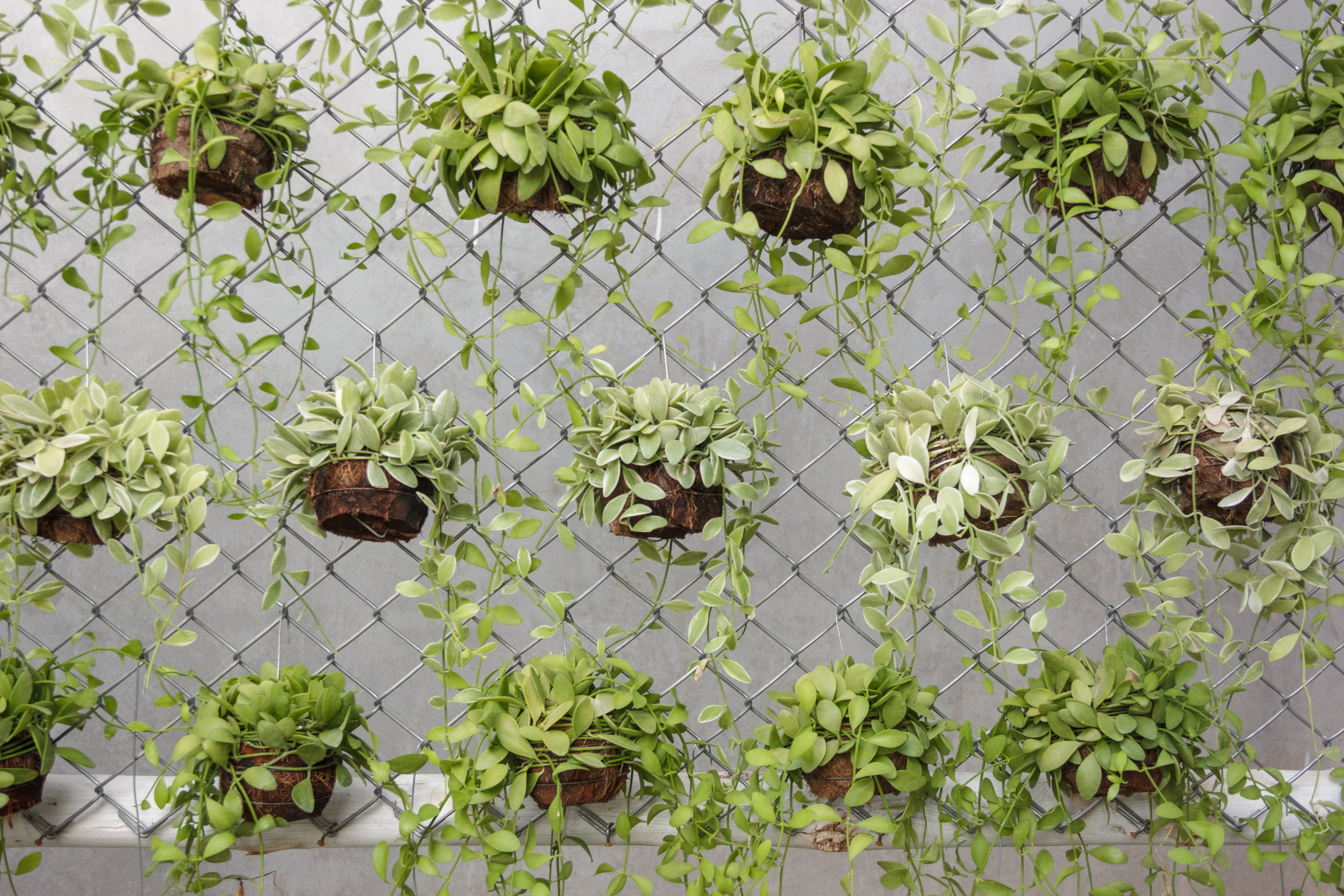
Hanging plants
Hanging plants are also a great addition ; they are particularly suitable in small pots or baskets that can be attached directly to the wall. This means your bare walls will be a real eye-catcher . An example is the climbing fig.
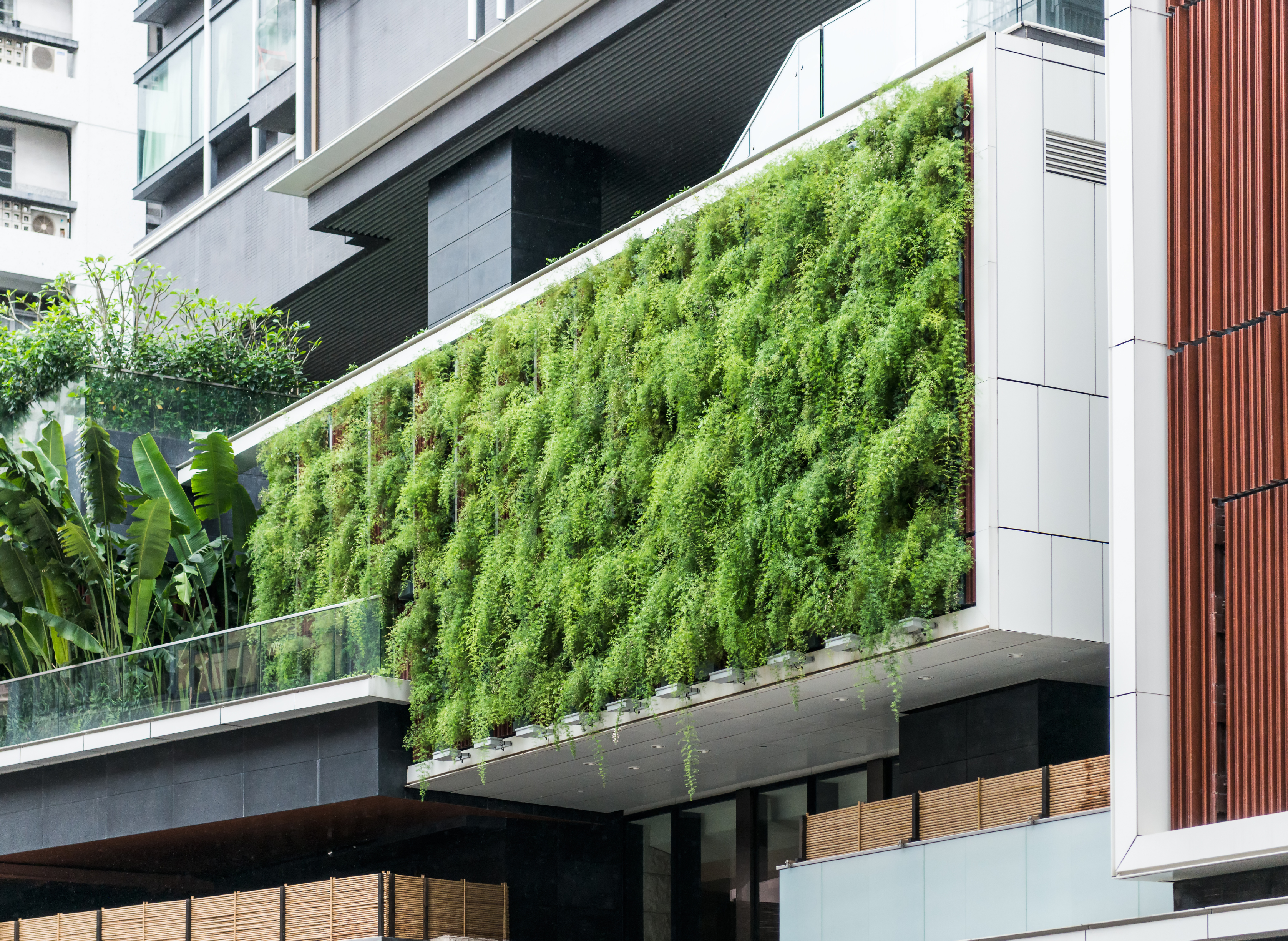
Ground cover
Ground cover plants are ideal for a vertical garden; they are undemanding, long-lasting, easy to care for and tolerate cutting and treading . These plants can spread well and grow densely, such as the fern. Decorative fern, for example, is a classic in vertical gardens.
Design tips for vertical gardens
Have you decided on a vertical garden and are now faced with the question of how to design it with creative ideas?
Here you will find inspiration and various design options:
Color scheme:
Choosing colors often comes down to personal preference, but there are general principles you can follow to create an appealing color scheme, for example:
Contrasting colors: A high-contrast color scheme with clear differences between colors can attract attention and give your vertical garden a vibrant look .
Natural tones: If you prefer a natural and calming look , choose earthy tones like green, brown or beige.
Consider seasonal variations in your vertical garden to ensure an attractive look all year round. This involves choosing plants that bloom or change their leaves at different times of the year.
Consider location, lighting, and surroundings when planning your color scheme. Experiment with different combinations to achieve the best design result.
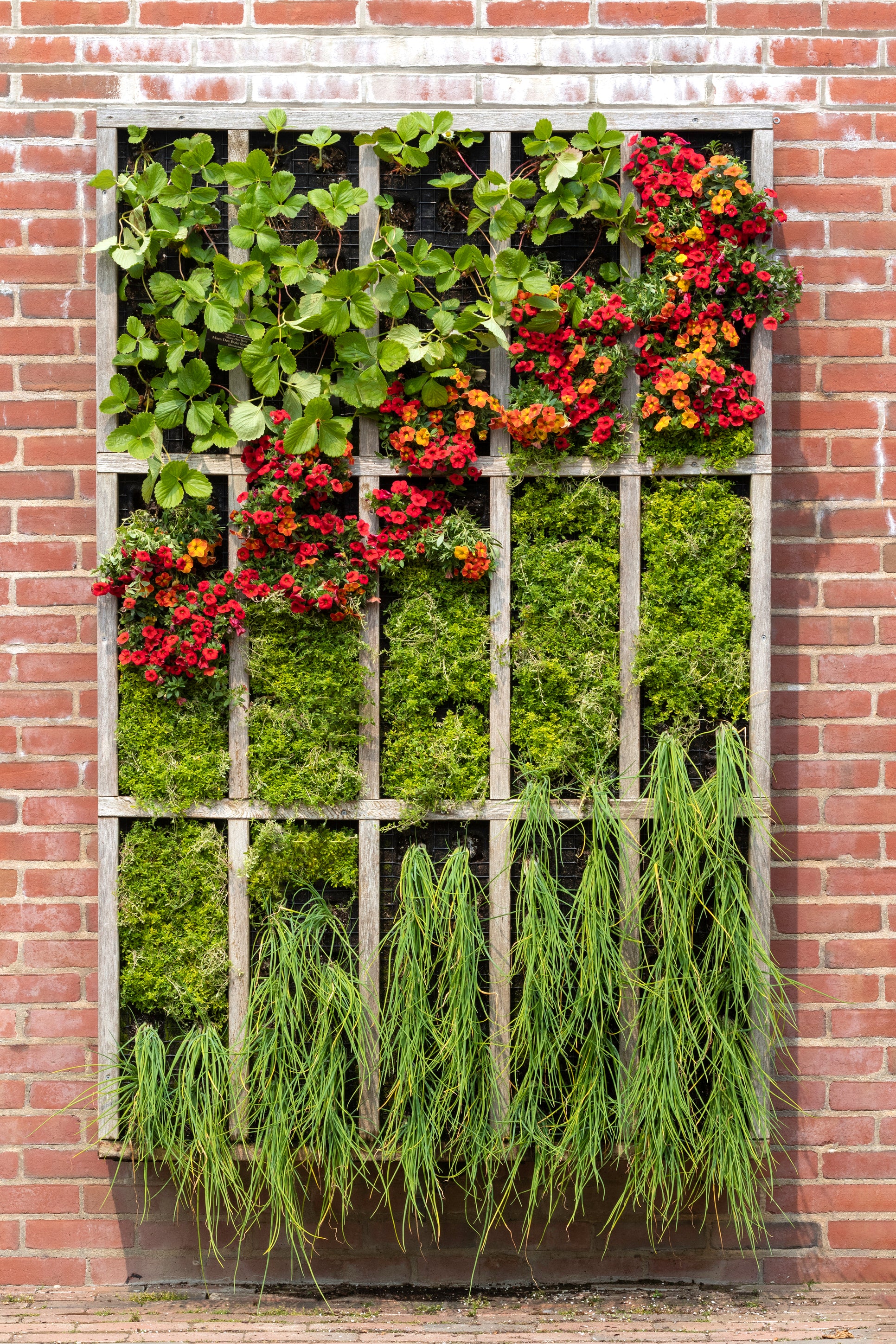
Plant combinations:
Ornamental plants or useful garden herbs?
Plants that cope well with room temperatures , such as ivy and ferns or herbs such as basil and parsley, are particularly advisable for planting on interior walls .
For an outdoor garden, it is essential to know whether the plants you choose are hardy if you want to enjoy them even in the cold winter months.
Tip: Use pre-grown plants to make your start easier. In addition, early vegetable plants often enable the first harvest after just a few weeks.

Decorative elements:
In addition to plants, decorative elements can give your vertical garden that certain something. You can make your garden even more personal with artistic murals, small sculptures, wind chimes or atmospheric lighting elements .
Vertical Garden: Heading to New Heights!
In the emerging era of gardening, vertical gardens offer not only aesthetic appeal but also practical solutions for limited spaces. Whether as an eye-catcher for an urban vegetable garden, as an ornamental garden or as a creative wall design - the fusion of nature and urbanity offers a unique opportunity to integrate green oases into everyday life.
Follow our instructions, raise nature vertically and make a green statement for a more sustainable and inspiring future!

